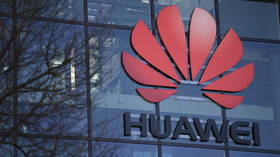Huawei’s launch of new map app signals Trump’s ban on China’s tech giant may backfire on Google

Huawei’s addition of the HERE WeGo map app to its app gallery shows that Donald Trump’s crackdown on the Chinese tech giant may be not that effective and could in fact inflict greater harm on American companies.
When Donald Trump took aim at Huawei last year, his plan was to fire a ‘kill shot’ at the Chinese communications firm.
In May 2019, Trump issued an executive order that banned American companies from using communication and information technology from anyone considered a security risk. His government simultaneously placed Huawei – at the time the world’s second biggest smartphone manufacturer – on the government’s ‘Entity List’ of companies barred from selling components to the US.
Also on rt.com Business as usual? Pompeo claims countries will ‘rethink’ Huawei partnerships after Covid-19The plan was to starve Huawei of access to quasi-monopolistic software from the likes of Google, Microsoft, and Apple, who had no choice back then but to cut ties with one of their biggest customers; it was an overtly political move under that convenient banner of ‘national security’. Its hand forced and its sales harmed, Huawei had to look for alternatives. HERE WeGo map app, added to Huawei's app gallery over the weekend could be one of the most significant of those.
HERE WeGo is not some sub-standard cobbled-together replacement. It began life as Nokia Maps in 2012 and is produced by HERE Technologies, a highly-regarded mapping company owned by a consortium of German car manufacturers including Audi and BMW, which provides location services to businesses such as Garmin, Amazon, and Yahoo.
Now that it’s the go-to (pun intended) map app for such a major player in the smartphone market, it’s a very real threat to Google’s dominance. What happens if other popular Chinese brands, such as OnePlus, Oppo, and Xiaomi, move towards HERE WeGo? Google is banned in China so they’re used to operating without it. And if it succeeds, there’s nothing to stop consumers from using it on other brands; it’s readily available in all app stores, including Play Store on Google’s Android operating system.
Also on rt.com Beijing won't just 'watch Huawei be slaughtered on the chopping board', company chief warns USWhat then if Google’s grip on other types of software loosens and, by extension, the grip of all US tech companies? They and the government are worried enough that the US Commerce Department began issuing limited licenses for tech companies to sell to Huawei again in November 2019 and, in March 2020, extended this ‘stay of execution’. Google, as yet, has not received its license but even if it does, it might come too late to avoid significant damage.
Despite the absence of Google, some downplaying of its prospects by senior management and the coronavirus pandemic, Huawei saw April-to-April growth of 1.4 percent in 2020. Not mind-blowing figures, but proof that Trump’s ban may be a less-than-lethal weapon.
Think your friends would be interested? Share this story!















